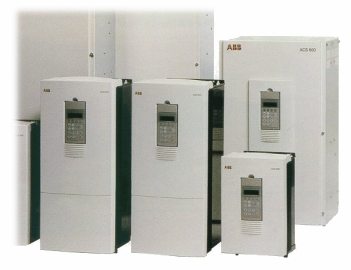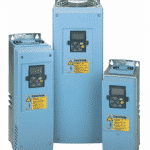Electronic Soft Start VS Variable Frequency Drive
Electric motors that start up across the line require a lot of energy when accelerating up to the motor’s full speed. Reducing the inrush current in an electric motor that has to frequently start and stop will reduce electric motor heating, which results in a longer lifespan of the electric motor. In pump, fan, mixer, conveyor and compressor applications, either an electronic soft start or a variable frequency drive can be applied to reduce inrush current. Choosing between an electronic soft start vs a variable frequency drive depends on whether or not the electric motor speed needs to be controlled, complexity of the application, and the performance requirements.
Benefits of an Electronic Soft Start
An electronic soft start controls an electric motor’s voltage supply during the start up process which reduces the inrush current on the electric motor, which extends the overall lifespan of the electric motor by reducing said inrush current. An electronic soft start are usually only seen on large fan, pump, centrifuge, and mixer applications that exceed 200 horsepower that require very few start and stops; have little or zero integration into facility networks; and are required to only operate at the electric motor’s full speed. Electronic soft startsreduce the wear on mechanical gears, chains, belts, sprockets and gearboxes.
Electronic soft starts also reduce water hammer in pumping applications. Reducing the electric motor inrush current can prevent peak overload of a plant, which can prevent peak demand penalties charged by the local utility company. An electronic soft start is less expensive than a variable frequency drive but an electronic soft start is far less complex than a variable frequency drive.
Benefits of a Variable Frequency Drive
 The main function of a variable frequency drive is to control the speed of an electric motor. Being able to reduce an electric motor’s speed increases energy efficiency.Variable frequency drives provide energy efficiency, diagnostic capabilities, process control integration, and reduced stress on electric motors and other manufacturing equipment. Most electric motor applications do not require the motor to operate at the motor’s full speed, so reducing the electric motor speed via a variable frequency drive by 20% can potentially reduce energy use by 50%.
The main function of a variable frequency drive is to control the speed of an electric motor. Being able to reduce an electric motor’s speed increases energy efficiency.Variable frequency drives provide energy efficiency, diagnostic capabilities, process control integration, and reduced stress on electric motors and other manufacturing equipment. Most electric motor applications do not require the motor to operate at the motor’s full speed, so reducing the electric motor speed via a variable frequency drive by 20% can potentially reduce energy use by 50%.
Variable frequency drives can be applied on processes that require extremely tight speed regulation by changing the motor frequency in relation to the load in order to accurately control the motor speed. Variable frequency drives have a much higher torque per amp ratio than electronic soft starts, which is why variable frequency drives are used on applications where high starting torque is required. Variable frequency drives provide fast payback in centrifugal pump applications because processes are maintained at reduced motor speeds; which reduces the total utility energy consumed. Most variable frequency drives can also be used as a phase converter for electric motors. Most variable frequency drive manufacturers offer drive products up to 3 horsepower for 1-phase 208-230 Volt input, 208-240 Volt 3-phase output.








